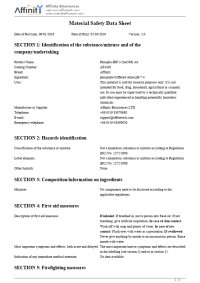Affinity Biosciences
AF3438
$280.00
100μl
| 100μl - | $280.00 | |
| 200μl - | $350.00 |
Phospho-IRF-3 (Ser385) Antibody
 Western blot analysis of IRF-3 phosphorylation expression in Insulin treated HT29 whole cell...
Western blot analysis of IRF-3 phosphorylation expression in Insulin treated HT29 whole cell... AF3438 at 1/100 staining Rat brain tissue by IHC-P. The sample was formaldehyde fixed and a heat...
AF3438 at 1/100 staining Rat brain tissue by IHC-P. The sample was formaldehyde fixed and a heat... AF3438 at 1/100 staining human lung tissues sections by IHC-P. The tissue was formaldehyde fixed...
AF3438 at 1/100 staining human lung tissues sections by IHC-P. The tissue was formaldehyde fixed...Antigen:
Interferon regulatory factor 3
Synonyms: IRF3_HUMAN; A8K7L2; B2RAZ3; Q14653; Q5FBY1; Q5FBY2; Q5FBY4; Q7Z5G6
Host:Rabbit
Reactivity:Human; Rat
Application:Western Blotting; Immunohistochemistry; ELISA
Isotype:IgG
Clonality:Polyclonal
Aliases:IIAE7; Interferon regulatory factor 3; IRF 3; IRF-3; IRF3; IRF3_HUMAN; MGC94729
Description:
Key transcriptional regulator of type I interferon (IFN)-dependent immune responses which plays a critical role in the innate immune response against DNA and RNA viruses. Regulates the transcription of type I IFN genes (IFN-alpha and IFN-beta) and IFN-stimulated genes (ISG) by binding to an interferon-stimulated response element (ISRE) in their promoters. Acts as a more potent activator of the IFN-beta (IFNB) gene than the IFN-alpha (IFNA) gene and plays a critical role in both the early and late phases of the IFNA/B gene induction. Found in an inactive form in the cytoplasm of uninfected cells and following viral infection, double-stranded RNA (dsRNA), or toll-like receptor (TLR) signaling, is phosphorylated by IKBKE and TBK1 kinases. This induces a conformational change, leading to its dimerization and nuclear localization and association with CREB binding protein (CREBBP) to form dsRNA-activated factor 1 (DRAF1), a complex which activates the transcription of the type I IFN and ISG genes. Can activate distinct gene expression programs in macrophages and can induce significant apoptosis in primary macrophages.
Purification:The antibody is from purified?rabbit serum by affinity purification via sequential chromatography on phospho- and non-phospho-peptide affinity columns.
Concentration:1mg/ml
Buffer form:Liquid
Storage buffer:Rabbit IgG in phosphate buffered saline , pH 7.4, 150mM NaCl, 0.02% sodium azide and 50% glycerol.Store at -20 ¡ãC.Stable for 12 months from date of receipt
Specificity:
Phospho-IRF-3 (Ser385) Antibody detects endogenous levels of IRF-3 only when phosphorylated at Serine 385.
Storage conditions:Rabbit IgG in phosphate buffered saline , pH 7.4, 150mM NaCl, 0.02% sodium azide and 50% glycerol.Store at -20 °C.Stable for 12 months from date of receipt.

Product specifications

Product specifications
Preparing document for printing...
0%




